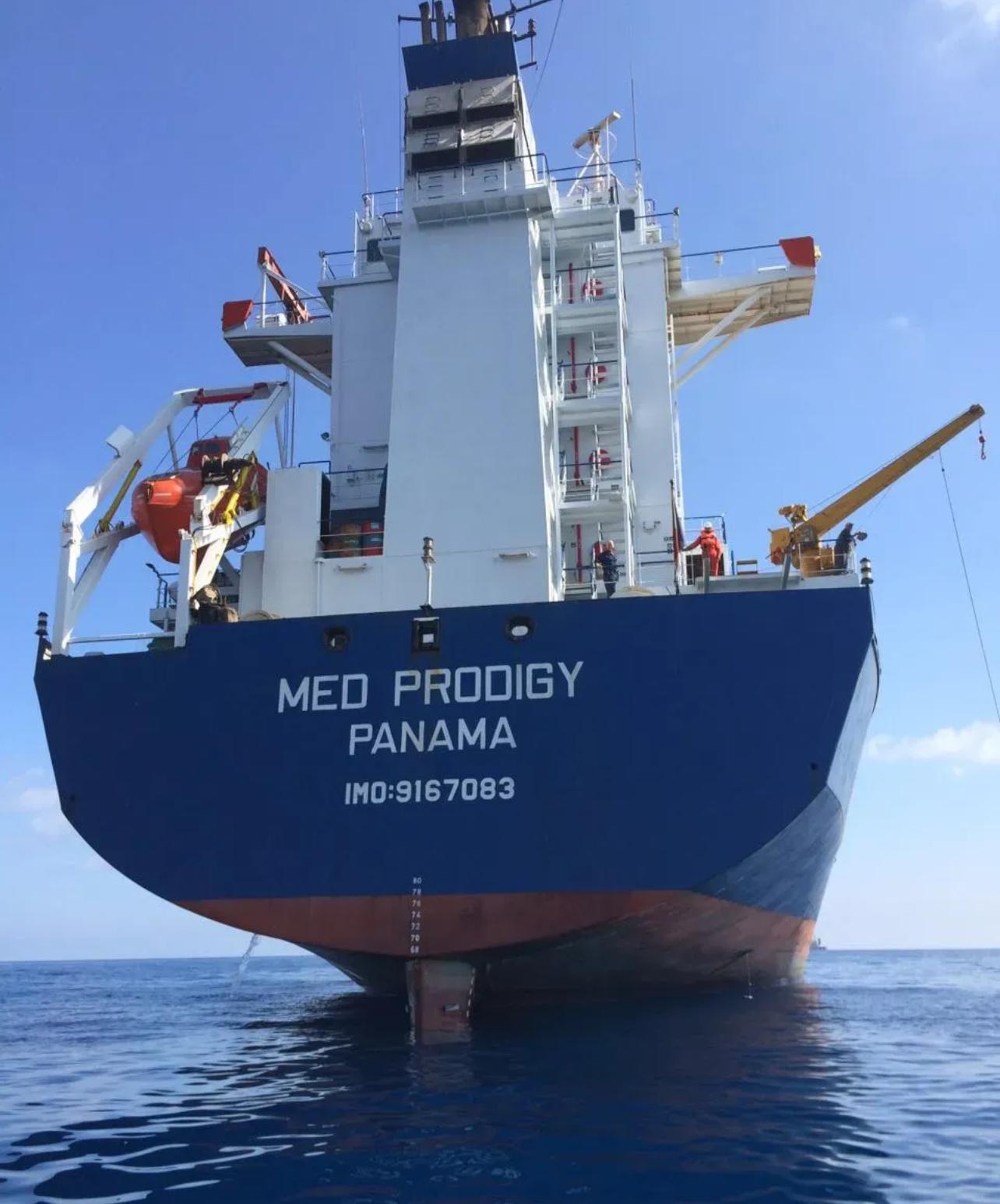Securing Strength: Rigging Operations and Structural Enhancements on the Med Prodigy Panama
Exploring Vessel Reinforcement, Load-Handling Systems, and Maritime Maintenance Techniques
Rigging operations on vessels like the Med Prodigy Panama are essential for sustaining maritime logistics, especially when handling dynamic forces from cargo operations, mooring, or rough weather conditions. From visual inspection of the project photos, it’s evident that heavy-duty lifting and adjustment tools—such as chain blocks, turnbuckles, slings, and wire ropes—were deployed to handle structural and mechanical adjustments. This suggests the replacement or recalibration of load-bearing components that include crane wires, hoist lines, and possibly lifeboat davit cables. Rigging technicians typically conduct stress and fatigue analysis on all metallic lines to identify microfractures and deformations caused by repeated use. Corroded or overstressed components are then swapped out with certified, load-rated replacements manufactured from galvanized or stainless steel alloys. In addition, pulleys and winches are lubricated and tension-adjusted to restore smooth, uninterrupted operations. For optimal function and safety, rigging paths are reoriented to prevent chafing and misalignment, especially where deck infrastructure poses routing challenges. Throughout the process, teams align all upgrades with SOLAS, IMO, and classification society standards to ensure both performance and legal compliance.
Alongside mechanical rigging, structural enhancements play a critical role in vessel renewal. When rigging points like winch bases, bollards, or padeyes are compromised, marine engineers reinforce the surrounding steel surfaces through welding, plating, and bracket fabrication. The visual cues from the worksite indicate that steelwork and welding were performed in several deck zones, likely targeting corroded or over-stressed segments. Weld seams are often evaluated through non-destructive testing methods such as magnetic particle or ultrasonic inspection to confirm strength and integrity. Further, new rigging components are anchored with structural bolts or welding tabs, calibrated to handle forces from towing lines or lifting booms. Scaffolding or temporary rigging towers may also be installed to stabilize high-mounted fixtures during maintenance. In some cases, synthetic slings and modern fiber rope systems are used to replace traditional steel cables, offering improved flexibility without compromising tensile strength. Once mechanical and structural tasks are complete, test lifts and simulated stress trials are performed to validate system performance under real-world conditions. These operations contribute to a secure platform for the vessel’s offshore or cargo-handling missions.
As the rigging work wraps up, final inspections and operational verifications ensure that the Med Prodigy Panama is not only repaired but optimized for future voyages. Lifeboat handling systems—heavily dependent on reliable rigging—are re-tested to verify automated deployment and retrieval. Lighting arrays mounted to rigging paths, such as mast and deck lights, may be rewired or repositioned during the upgrade to eliminate wear from vibration or weather exposure. To enhance durability, treated protective coatings are applied across exposed surfaces, shielding both steel fixtures and rigging elements from saltwater corrosion. Remaining loose tools and hardware are stowed, and the deck is cleaned of grit and metal shavings to prevent slipping hazards. Functional validation of winches, cranes, and capstans concludes the project, followed by documentation updates and re-certification procedures. These documents are submitted to both classification societies and port authorities for compliance tracking. Ultimately, this thorough repair campaign reinforces the vessel’s safety, maneuverability, and cargo-handling efficiency, supporting continued marine operations in demanding environments.






























































